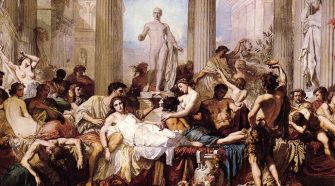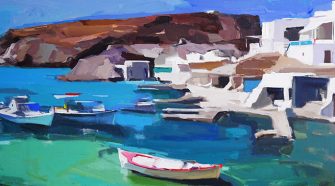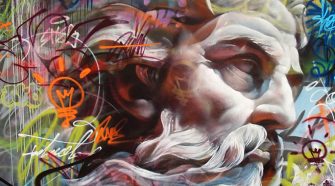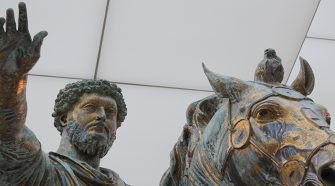
Classical Greek Painting
Looking at Classical Greek painting you see a revelation of naturalist and linear perspectives that remained intact until Italian high renaissance. During the classical period painting of all sorts flourished including vase painting. The highest form of painting completed though was panel painting that was done in tempura or encaustic. Subjects painted included portraits, figurative …

Greek Artists Keeping Art Alive
Greek art is actually tragically disappearing especially since few temples survived including the temple of Hephaestus and the Parthenon. Only a few fragments of the five wonders of the world built by Greece survived. This include Lighthouse of Alexandria, Mausoleum of Hailicarnassus, Statue of Zeus at Olympia, Temple of Artemis at Ephesus and Colossus of …

Greek Mythology Paintings
Inside the National Gallery in London and also the Uffizi Gallery in Florence are a large number of magnificent Greek mythology paintings.

The Most Intense Greek Statues
Artemision Bronze The Artemision bronze is believed to be either Poseidon or Zeus and it is unknown who sculpted it even though suggestions are that it could be either Onata or Myron. It was recover in Cape Artemision from the sea. Zeus at Olympia The 13 meter statue of Zeus depicting a sitting giant which …

Different Phases of Greek Art
From 16th century BC various phases were evident in Greek art in making it eternally memorable and they were like follows: Mycenaean Art which was done from around 1550 until 1200 BC on mainland Greece. It is true that Greek and the Mycenaean cultures have been completely different and separate entities, however since they shared …

Ancient Greek Sculptors
Ancient Greece delivered top artists however some stand out as masters and some of their work have been copied through the ages. During the Archaic period you would find that the art was stylized but during the Classical period the style was more realistic. Early Classical Period – Myron of Eleutherae in the fifth century …

Greek Sculpture Methods and Materials
People can only imagine how so much realism could ever be achieved by going back to the roots of Greek art and sculpture. Looking at and examining material and tools closely and also the exact techniques used to turn raw materials into outstanding masterpieces of art that some of still exist and being admired in …

Greek Sculpture and Inspirations in Art
Looking at Greek sculpture and where its inspiration come from during 800 to 300 BC you will distinctly notice influence from Near Eastern and Egyptian monumental art, which through centuries evolved into what we today know very well as uniquely Greek art visions. Taking that inspiration Greek artists have taken expertise and excellence in order …

